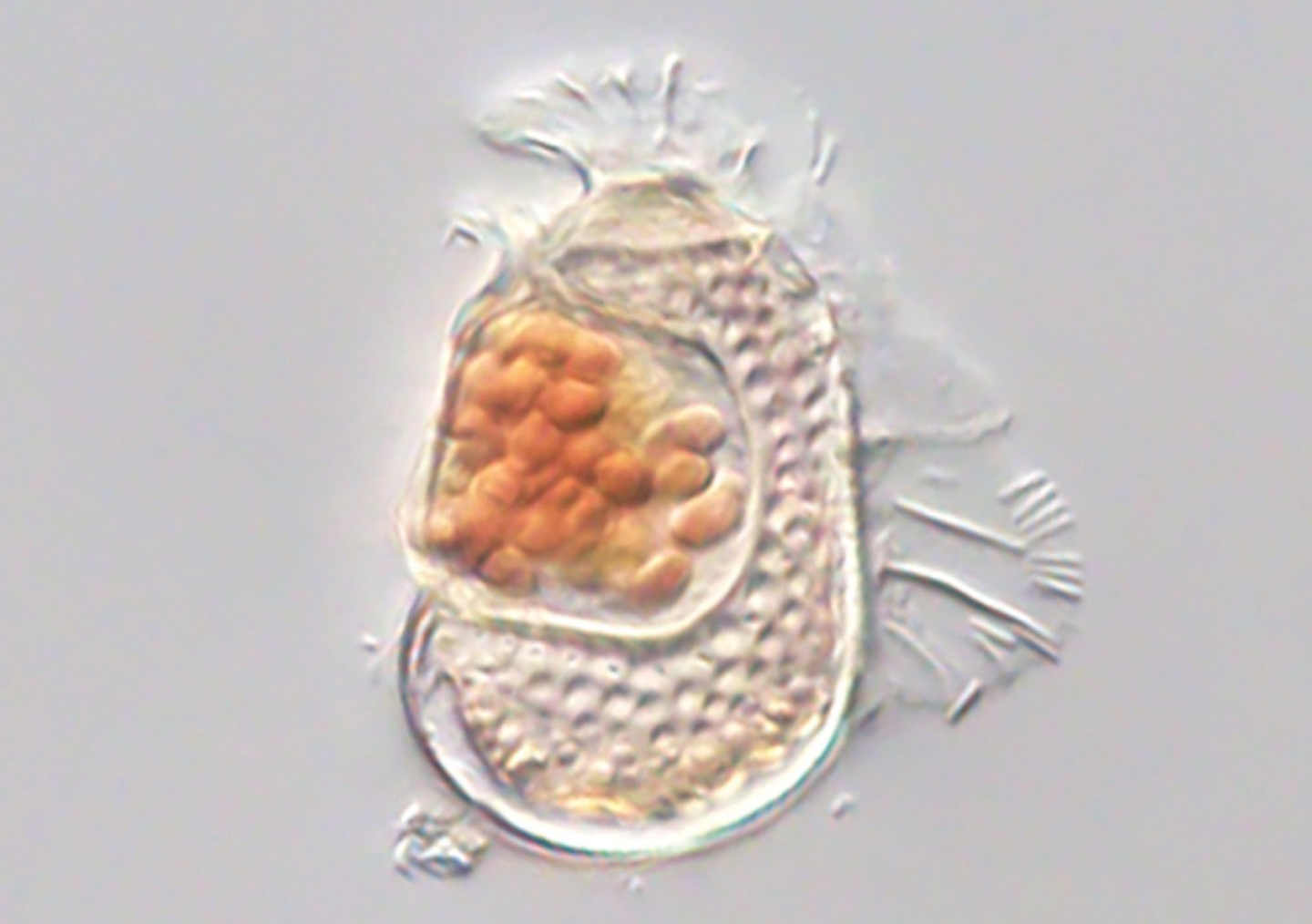New sensor can detect Alzheimer’s disease up to 17 years in advance
The dementia disorder Alzheimer’s disease has a symptom-free course of 15 to 20 years before the first clinical symptoms emerge.

[July 24, 2022: Julia Weiler, Ruhr-University Bochum]
A research team is able to identify signs of Alzheimer’s disease in the blood up to 17 years before the first clinical symptoms appear. (CREDIT: Stock.adobe.com)
The dementia disorder Alzheimer’s disease has a symptom-free course of 15 to 20 years before the first clinical symptoms emerge. Using an immuno-infrared sensor developed in Bochum, a research team is able to identify signs of Alzheimer’s disease in the blood up to 17 years before the first clinical symptoms appear.
The sensor detects the misfolding of the protein biomarker amyloid-beta. As the disease progresses, this misfolding causes characteristic deposits in the brain, so-called plaques.
“Our goal is to determine the risk of developing Alzheimer’s dementia at a later stage with a simple blood test even before the toxic plaques can form in the brain, in order to ensure that a therapy can be initiated in time,” says Professor Klaus Gerwert, founding director of the Centre for Protein Diagnostics (PRODI) at Ruhr-Universität Bochum. His team cooperated for the study with a group at the German Cancer Research Centre in Heidelberg (DKFZ) headed by Professor Hermann Brenner.
The team published the results obtained with the immuno-infrared sensor in the journal “Alzheimer’s & Dementia: The Journal of the Alzheimer’s Association” on 19 July 2022. This study is supported by a comparative study published in the same journal in which the researchers used complementary single-molecule array (SIMOA) technology.
Related Stories
Early detection of symptom-free people with a high risk of Alzheimer’s disease
The researchers analysed blood plasma from participants in the ESTHER study conducted in Saarland for potential Alzheimer’s biomarkers. The blood samples had been taken between 2000 and 2002 and then frozen. At that time, the test participants were between 50 and 75 years old and hadn’t yet been diagnosed with Alzheimer’s disease.
For the current study, 68 participants were selected who had been diagnosed with Alzheimer’s disease during the 17-year follow-up and compared with 240 control subjects without such a diagnosis. The team headed by Klaus Gerwert and Hermann Brenner aimed to find out whether signs of Alzheimer’s disease could already be found in the blood samples at the beginning of the study.
The immuno-infrared sensor was able to identify the 68 test subjects who later developed Alzheimer’s disease with a high degree of test accuracy. For comparison, the researchers examined other biomarkers with the complementary, highly sensitive SIMOA technology – specifically the P-tau181 biomarker, which is currently being proposed as a promising biomarker candidate in various studies.
Part of the Bochum research team: Klaus Gerwert (left) and Léon Beyer. (CREDIT: RUB, Marquard)
“Unlike in the clinical phase, however, this marker is not suitable for the early symptom-free phase of Alzheimer’s disease,” as Klaus Gerwert summarises the results of the comparative study. “Surprisingly, we found that the concentration of glial fibre protein (GFAP) can indicate the disease up to 17 years before the clinical phase, even though it does so much less precisely than the immuno-infrared sensor.”
Still, by combining amyloid-beta misfolding and GFAP concentration, the researchers were able to further increase the accuracy of the test in the symptom-free stage.
Start-up aims to bring immuno-infrared sensor to market maturity
The Bochum researchers hope that an early diagnosis based on the amyloid-beta misfolding could help to apply Alzheimer’s drugs at such an early stage that they have a significantly better effect – for example, the drug Aduhelm, which was recently approved in the USA.
“We plan to use the misfolding test to establish a screening method for older people and determine their risk of developing Alzheimer’s dementia,” says Klaus Gerwert. “The vision of our newly founded start-up betaSENSE is that the disease can be stopped in a symptom-free stage before irreversible damage occurs.”
Even though the sensor is still in the development phase, the invention has already been patented worldwide. BetaSENSE aims to bring the immuno-infrared sensor to market and have it approved as a diagnostic device so that it can be used in clinical labs.
Clinical trials with Alzheimer’s drugs often fail
Approved by the FDA in the USA in spring 2021, the drug Aduhelm has been shown to clear amyloid-beta plaques from the brain. However, previous studies showed it had only a minor effect on clinical symptoms such as memory loss and disorientation.
Consequently, the European Medicines Agency decided in winter 2021 not to approve the drug in Europe. “Up to now, clinical trials for Alzheimer’s drugs have been failing by the dozen, apparently because the established plaque tests used in the trials don’t flag up the disease in time,” says Gerwert. “It seems that once plaques are deposited, they induce irreversible damage in the brain.”
In the tests used to date, the plaques are either detected directly in the brain with the complex and expensive PET scan technology or indirectly determined in a less complex way using protein biomarker concentrations in invasively obtained cerebrospinal fluid with ELISA or mass spectrometry technology.
In contrast to established plaque diagnostics, the immuno-infrared sensor indicates the earlier misfolding of amyloid-beta, which causes the later plaque deposition.
“However, it is still controversially discussed whether this misfolding is the cause of Alzheimer’s disease or if it’s just an accompanying factor,” points out Gerwert. “For the therapeutic approach, this question is crucial, but it is irrelevant for the diagnosis. The misfolding indicates the onset of Alzheimer’s disease.”
“The exact timing of therapeutic intervention will become even more important in the future,” predicts Léon Beyer, first author and PhD student in Klaus Gerwert’s team. “The success of future drug trials will depend on the study participants being correctly characterised and not yet showing irreversible damage at study entry.”
Biomarkers for Parkinson’s and ALS
Misfolded proteins play a central role in many neurodegenerative diseases, such as Parkinson’s disease, Huntington’s disease and amyotrophic lateral sclerosis (ALS).
As the researchers have showed, the immuno-infrared sensor can in principle also be used to detect other misfolded proteins, such as TDP-43, which is characteristic of ALS. They don’t measure the concentration of a specific protein, but detect its misfolding using disease-specific antibodies.
“Most importantly, this platform technology enables us to make a differential, precise biomarker-based diagnosis in the early stages of neurodegenerative diseases, in which the currently applied symptom-based diagnosis is very difficult and prone to errors,” stresses Gerwert.
Note: Materials provided above by Ruhr-University Bochum. Content may be edited for style and length.
Like these kind of feel good stories? Get the Brighter Side of News' newsletter.
Tags: #New_Discoveries, #Proteins, #Alzheimers, #Medical_Good_News, #Sugars, #Neuroscience, #Research, #Science, #Brain, #The_Brighter_Side_of_News
Joseph Shavit
Head Science News Writer | Communicating Innovation & Discovery
Based in Los Angeles, Joseph Shavit is an accomplished science journalist, head science news writer and co-founder at The Brighter Side of News, where he translates cutting-edge discoveries into compelling stories for a broad audience. With a strong background spanning science, business, product management, media leadership, and entrepreneurship, Joseph brings a unique perspective to science communication. His expertise allows him to uncover the intersection of technological advancements and market potential, shedding light on how groundbreaking research evolves into transformative products and industries.



